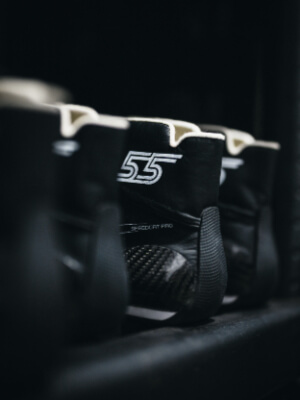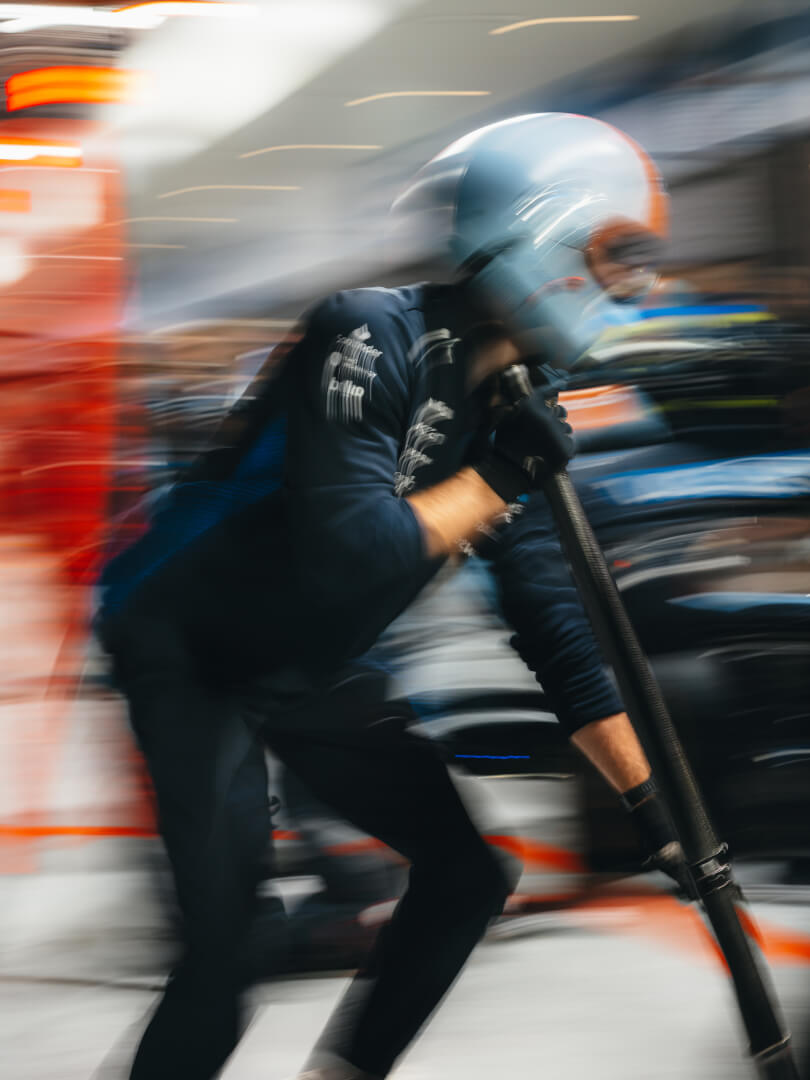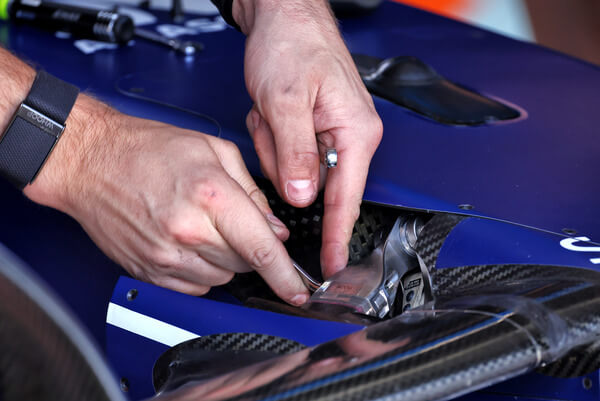Lateral career moves: Exploring F1 jobs with internal career growth
Join our Talent Community
Join our talent community to stay connected with life on and off the track at Atlassian Williams Racing.As part of our talent pool, you’ll be the first to hear about opportunities that match your skillset - your chance to be part of something extraordinary and help create our winning formula.
Register
Meet Tullio Nutta working in Aerodynamics

Career development in Formula 1 doesn’t mean sticking to one lane. Professionals are 64% more likely to stick around in a job that offers lateral mobility, and the benefits of stepping sideways into something new can be seen throughout our teams.
At Atlassian Williams Racing, internal mobility is built into our DNA. We believe in backing potential and helping people shape their future. Whether you’re working in engineering, technology, or operations, there’s opportunities to move across departments and learn new skills.
Our culture of internal development means you can move any way you want. To show what lateral career moves look like at Williams, we spoke to team members who have made the leap.
How lateral moves have transformed careers at Williams
Lateral career moves have been a game-changer for many of our professionals. A shining example of this is George Patey, who went from a fresh-faced apprentice to senior design engineer.
“I did a young apprenticeship in motorsport engineering which required several weeks of work experience. I managed to get in at Williams for a week in the composites department.
At 16, I started full-time at Williams through the very competitive apprenticeship programme. I rotated around the business before specialising in composites, mainly focused on manufacturing the chassis.
After my apprenticeship I became a full-time composite technician. Four years later, I moved into the design department as a composite support engineer, then as a composite design engineer. Most recently, I’ve been promoted to senior design engineer, looking after a large section of chassis design.”
Now having a direct influence on car performance, George’s story shows where our early careers opportunities can take those with the right blend of talent and passion. He went on to explain the inspiration behind his move.
“The opportunity to progress my career, have greater influence on the car’s performance and utilise what I learned during my degree were all key factors in making the move into design. Going from a hands-on job to a desk job was quite a challenge, especially since the group was new and still developing processes. Helpful colleagues, both new and old, made the transition much easier.”
The journey from early careers into a full-time role can also be seen in Alex Seed’s story. Having graduated with a master's in design engineering before gaining experience in one of our placements, he took an interesting nautical detour before following his passion back to Williams.
“I initially did a placement year here in 2019 before returning in January 2023 into my current role of design quality engineer. It’s quite a varied role, I handle a lot of regulations and compliance with one the FIA’s technical directives. Prior to working here, I was a skipper leading on flotilla holidays in Greece and one of my clients used to work at Williams. I’ve always wanted to work in F1, and having heard some great things about Williams, it ignited my interest to look at jobs here more seriously.”
How Williams supports internal career moves
Everyone needs a helping hand to climb the ladder, and we give you all the support you need. You’ll be encouraged to explore new roles, but you’ll never have to do it alone. Laura Kirk, licensing executive, shared how the support she received during her lateral career move from HR made for a smooth transition.
“Everyone involved was very supportive of the move and the process was really efficient. There’s so much opportunity within Williams. I’ve found the culture is very open to doing things differently, which has been implemented by James Vowles. This means making a lateral move is met with support from the team.”
Ed Barrow, who moved from systems engineering to race strategy, also emphasised how important the backing and mentorship offered by Williams is.
“My manager was incredibly supportive of the move. I raised the possibility that I would move departments, and his response was ‘while I don’t want to lose you from the department, I would rather you stay in Williams and so I’ll support the move however I can’. That sums up the value of teamwork and how we’re all in it together.”
How lateral moves drive personal and professional growth
Lateral career moves are a catalyst for growth and achieving ambitions. Ollie Mitchell, spares coordinator in the race team who started out on the factory floor, shared how he’s now living a life-long dream.
“I made the move to fulfil my dream of being part of a Formula 1 race team. Williams as a company is very open to allowing people to improve and widen their understanding of the business. Switching to a racing team meant developing a whole new skill set. This has included stock management, freight, logistics, people management and prioritisation of tasks.”
Adam Davenport, whose F1 internal mobility journey has taken him from production control to the pattern shop, has also seen the benefits from both an interpersonal and technical perspective.
“The career move has improved my communication skills. Having to deal with new members of the team and a different department meant I had to be clear and consistent. It’s also allowing me to expand and build on my manufacturing knowledge as I take a deeper dive into the way the pattern shop department and composites work.”
We’re committed to developing our team and helping them shape their future. This growth shows the power of lateral career moves and why they’re fuelling our ambitions of getting back to the front of the grid.
The importance of teamwork in making lateral moves a success
Teamwork is one of the core values that powers everything we do at Williams. It ensures that lateral moves are not just a career shift but also an opportunity to learn alongside some of the brightest minds in the industry. Ed Barrow reflected on how crucial this value was to this transition.
“Even under moments of high stress and pressure, my new team took the time to help me. The willingness of my colleagues to take time out of their day to teach me has been massive in making the job change as smooth as possible. My old team has been so supportive while my new team has welcomed me while being patient with my many questions!”
Laura Kirk also views the collaborative and team-focused culture as being key to helping her settle in.
“Everyone I’ve encountered in my new role has been welcoming and friendly. The best learning I’ve received has been from my manager, Lucy. She’s really helped me since I started and allowed me to learn quickly. Her support has been vital to my development.”
For Alex Seed, teamwork is what sets Williams apart.
“The drive of everybody here is what makes the culture so special. There’s a real eagerness and willingness to keep pushing forward and move the team further up the grid. There’s big growth and development opportunities here. I’ve had some great support from managers and colleagues. They all drive us to be the best we can be and support us at every stage.”
Advice for anyone considering a lateral career move
If you’re considering making a lateral move or looking for F1 careers with growth potential, the advice from our team members is clear: go for it. Adam Davenport shared his thoughts on our commitment to long-term growth.
“If you’re considering a role at Williams, I can confidently say that long-term growth is available and possible. There are structures in place within the company to help people discuss and explore long-term growth if this is something they want to work on.”
For Laura Kirk, it’s all about being ready when opportunity comes knocking.
“I would say to be open-minded. There is so much opportunity at Williams that there is often scope to explore new options. Your new role may be one that you had not even considered as an option.”
This sentiment is shared by Ollie Mitchell.
“If the opportunity sounds interesting, then go for it. You don’t know what doors it will open in the future and internal movements will allow you to grow your skill set on both a professional and personal level.”
Finally, George Patey summed up how much of a priority internal mobility is at Williams.
“I’ve seen multiple people progress into management and change departments into completely new roles. If you’re a hard worker and align with the Williams values, then the company will do what it can to support you and keep you in the business. The best advice would be to talk to people about other roles and how they’d suggest making that move happen.”
Find your place with agile careers at Williams
If these stories have inspired you, you can follow in their footsteps and find your place at Williams. From F1 engineering jobs to roles in our ops team, we have opportunities to grow across a wide range of disciplines. Wherever your passion lies, we keep the door open to explore new career paths in Formula 1.
Want to help create our winning formula? Explore our latest Formula 1 jobs or join our talent community to stay up to date with our opportunities.
Receive articles like this
Enter your email address and you will be registered to receive the latest content and insights produced by Atlassian Williams Racing, direct to your inbox. If you have selected a category or content type you will receive the latest insights from that area.
By clicking submit you agree to our terms and conditions and privacy policy.
Related positions
Salary
Location
Grove
Function
Aerodynamics
Time Type
Full Time
Location
Grove
Job Type
Experienced
Description
Role Purpose: To ensure Aerodynamic Wind Tunnel tests are carried out in an effective and efficient manner. To develop, implement and refine facility and capability improvement projects.Line Managemen
Reference
bdc485bd-2fc9-49a5-ad85-d9ecdb76860f
Expiry Date
01/01/0001
Salary
Location
Grove
Function
Aerodynamics
Time Type
Full Time
Location
Grove
Job Type
Experienced
Description
We are looking for a driven Aerodynamics Project Leader to work closely with our Principal Aerodynamicists and take the technical lead of a team of talented engineers. This role focuses on developing
Reference
dd29d1ea-1724-4e7e-a371-cf992cec4eaf
Expiry Date
01/01/0001
Salary
Location
Grove
Function
Aerodynamics
Time Type
Full Time
Location
Grove
Job Type
Experienced
Description
You will be part of the aerodynamic development team that has the primary goal of developing innovative aerodynamic solutions for the current and future race car. Working closely with the groups Princ
Reference
4327b440-cac4-43c2-9978-cc055917df1d
Expiry Date
01/01/0001



